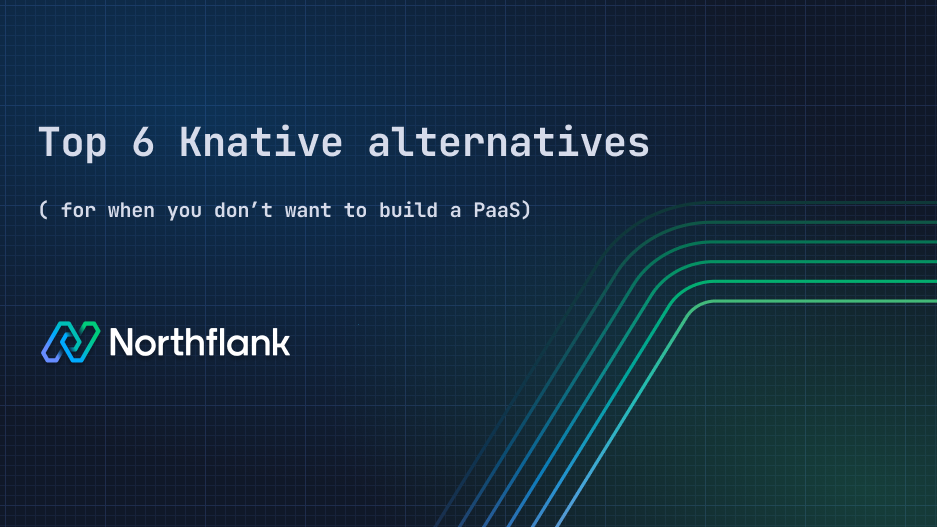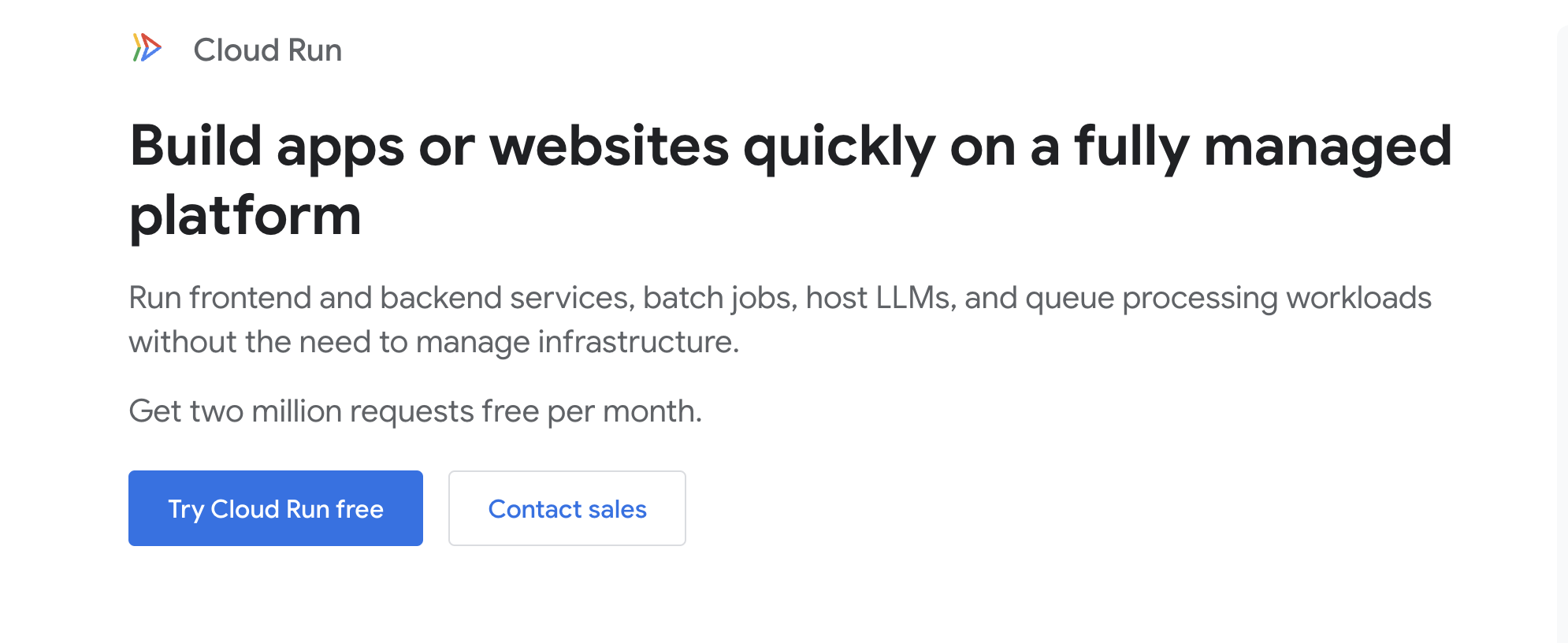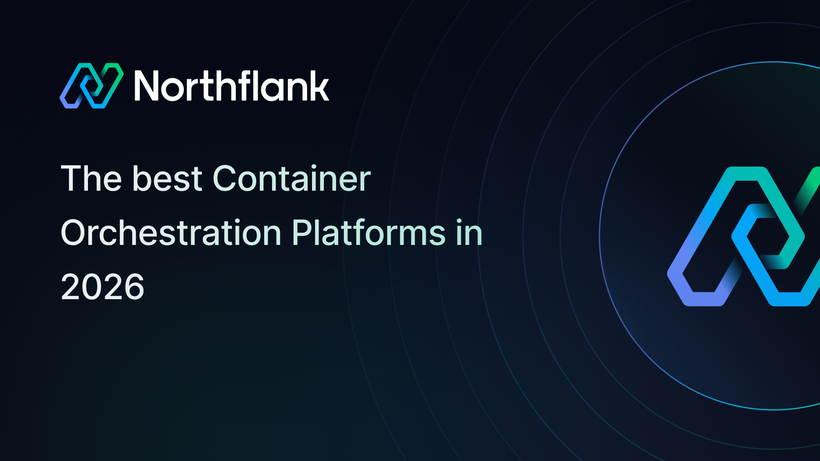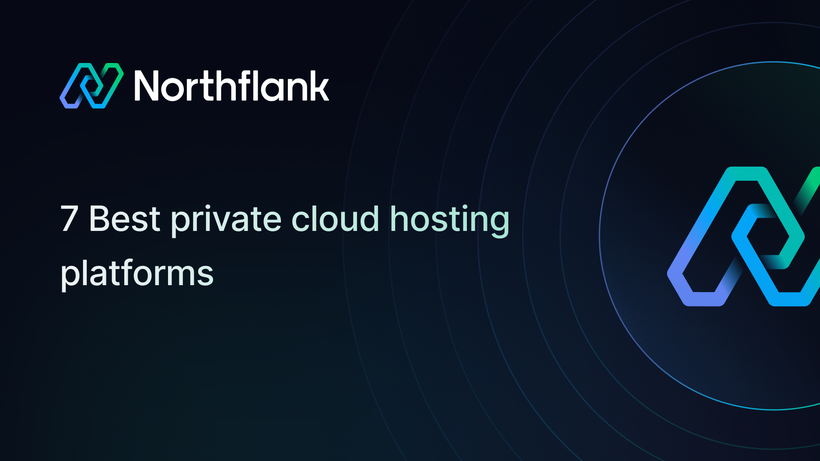

Top 6 Knative alternatives for when you don’t want to build a PaaS
Knative is great, if you want to build your own PaaS, but most teams don’t. In this article, we'll walk you through the top 6 Knative alternatives that avoid that.
Knative is a Kubernetes-based framework for building serverless platforms. It gives platform engineers the core primitives to deploy and scale HTTP workloads, respond to events, and build serverless pipelines.
At a high level, Knative has two main components:
- Knative serving – Lets you deploy containerized applications that scale based on traffic, including scale-to-zero.
- Knative eventing – Provides event sources, brokers, and triggers to build loosely coupled, event-driven systems.
Knative is used behind the scenes in systems like Google Cloud Run, but on its own, it’s not a plug-and-play developer experience. It’s a platform toolkit, not a full platform.
While Knative gives a lot of control, it comes with serious overhead:
- Operational complexity: You need to manage Istio/Kourier, configure autoscaling, provision TLS, and monitor custom resources across your clusters.
- No batteries included: There’s no built-in CI/CD, secret management, observability, or UI.
- Requires platform expertise: You’re effectively building your own PaaS. Most teams aren’t staffed (or interested) enough to take that on.

For many teams, the goal isn’t to build a platform. It’s to ship resilient, scalable software fast. That’s where Knative alternatives come in, offering similar functionality, but without the heavy lifting.
For a deeper breakdown of this tradeoff, check out Build vs buy: The platform engineer’s conundrum, which explores why even well-funded teams are starting to move away from building in-house platforms.
If you don’t want to build your own PaaS, here are the top Knative alternatives worth considering:
- Northflank – Best all-around option. Full platform with autoscaling, CI/CD, and support for both stateless and stateful services. Managed or self-hosted.
- OpenFaaS – Lightweight, open-source toolkit for function-based deploys. Requires more setup.
- Render – Simple, managed PaaS with autoscaling. Less flexible, better for small apps.
- Fission – Kubernetes-native FaaS with extensibility. No built-in CI/CD or UI.
- Google Cloud Run – Managed Knative. GCP-native, solid for stateless apps.
- Koyeb – Fast global deploys for stateless apps. Not suitable for persistent workloads.
The best Knative alternative depends on your team's goals, constraints, and maturity.
Key factors to consider:
- Self-hosted vs. managed: Do you want full control over infrastructure, or would you rather offload it?
- Support for scale-to-zero: Not all platforms do this natively.
- Support for stateful services: Some tools focus only on stateless functions.
- CI/CD integration: Is deployment tied to Git pushes? Can you customize build pipelines?
- Customizability vs. simplicity: How much infra plumbing are you willing to manage?
Below are six platforms that serve as strong Knative alternatives, each with different strengths. One stands out as the best all-around option for modern teams.

Northflank gives you the power of Kubernetes and Knative’s dynamic scaling, but without needing to build and glue together the whole system yourself.
- Auto-scaling (including scale-to-zero) for services, jobs, and cron
- Built-in CI/CD from Git, with custom build pipelines
- First-class support for databases, persistent volumes, service discovery
- Deploy to Northflank’s managed infra or your own cluster (self-hosted)
- Rich UI + API + CLI support
- Uses Kubernetes under the hood, but abstracts it behind clean primitives
- Autoscaling is configurable at the service level: concurrency, min/max replicas, resource limits
- Networking, TLS, and DNS management are handled out-of-the-box
Northflank removes the need for a platform team. You get the benefits of Knative (scale-to-zero, container-first workflows, modern infra) without wiring everything up from scratch.
✅ Best for: Full-stack teams, enterprises, startups, or product orgs who want a developer platform that scales without needing to build one.

OpenFaaS is an open-source framework for running functions as a service. It's a lighter-weight alternative to Knative that supports Kubernetes, Docker Swarm, or bare metal.
- Function-based deploys with scale-to-zero
- Runs on top of your existing Kubernetes or container runtime
- CLI + UI for deploys
- Requires you to manage your own ingress, secrets, observability
- Best suited for stateless workloads, not full-service apps
✅ Best for: DevOps teams comfortable managing infra who want a simpler serverless engine than Knative.

Render offers a managed platform for apps, background workers, and static sites. It abstracts away Kubernetes entirely and provides an opinionated developer experience.
- Autoscaling, cron jobs, HTTP and background workers
- Built-in Postgres and Redis support
- Git-based deploys
- Scale-to-zero only available on higher-tier plans
- Less configurable than Knative/Northflank (no fine-tuned resource or traffic management)
- Not ideal for multi-region or enterprise use cases
✅ Best for: Small teams who want a Heroku-style experience with some container flexibility.

Fission is another open-source framework built specifically for Kubernetes-native functions. It’s less heavy than Knative and focuses entirely on serverless execution.
- Deploy functions directly using source code or containers
- Supports HTTP triggers, message queues, and timers
- Written in Go and highly extensible
- Like Knative, requires a managed K8s cluster
- No built-in CI/CD or observability
- Not designed for long-running services
✅ Best for: Kubernetes-heavy teams looking for simple, extensible function execution without the Knative footprint.

Cloud Run is effectively a hosted Knative instance, abstracted for developer friendliness. It’s good for HTTP-based services that need scale-to-zero and strong GCP integration.
- Container-based deploys from Git or Artifact Registry
- Managed scaling and load balancing
- Built-in identity, IAM, and monitoring via Google Cloud
- Limited control over runtime environment
- Tightly coupled to GCP (vendor lock-in)
- Not ideal for persistent or hybrid workloads
✅ Best for: GCP-centric teams deploying stateless web services.

Koyeb focuses on fast global deployment of stateless applications. It runs containers on a global edge network with support for auto-scaling and GitOps-style deploys.
- Instant HTTP APIs with automatic TLS
- Fast cold start times via Firecracker microVMs
- Global routing and regional failover
- No support for persistent data or stateful apps
- Runtime customization is limited
- Not self-hostable
✅ Best for: Simple APIs and frontend backends where speed and global reach matter most.
| Platform | Scale-to-zero | CI/CD built-in | Stateful support | Self-hosted option | Best for |
|---|---|---|---|---|---|
| Northflank | ✅ Yes | ✅ Yes | ✅ Yes | ✅ Yes | Product teams, startups, full-stack apps |
| OpenFaaS | ✅ Yes | ❌ No | ❌ No | ✅ Yes | Infra-savvy teams, simple FaaS needs |
| Render | ⚠️ Partial* | ✅ Yes | ✅ Yes | ❌ No | Small teams, quick deploys |
| Fission | ✅ Yes | ❌ No | ❌ No | ✅ Yes | Kubernetes-heavy teams, extensibility |
| Cloud Run | ✅ Yes | ⚠️ Partial* | ⚠️ Limited | ❌ No | GCP users, stateless web services |
| Koyeb | ✅ Yes | ✅ Yes | ❌ No | ❌ No | APIs, global-first stateless apps |
*Render’s scale-to-zero and Cloud Run’s CI/CD depend on plan or setup.
Knative is a great framework, if your goal is to build a PaaS. But most teams don’t want to maintain their own platform; they want to ship features, handle traffic, and stay reliable.
That’s why Knative alternatives are gaining traction, especially those that strike a better balance between power and simplicity.
Northflank stands out because it offers:
- A developer-friendly experience
- Full support for container-based apps and jobs
- Native autoscaling (including scale-to-zero)
- Managed and self-hosted options
- Everything you’d need to build a PaaS—already built
If your team is tired of stitching together infrastructure and just wants to deploy and scale with confidence, Northflank is the most complete and pragmatic Knative alternative on the market.
Start deploying with Northflank, for free, here.



